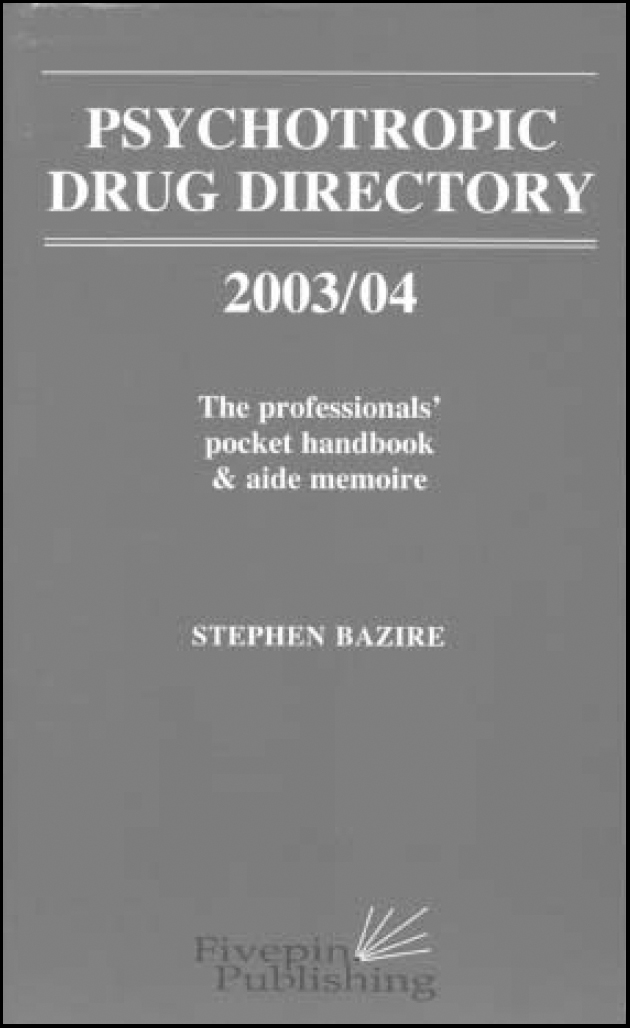
Rock bands fear releasing ‘the difficult third album’. Marriages are unsettled by the seven-year ‘itch’. Over repeated editions, initially successful and much-respected books become jaded and unnecessary. This familiar handbook, often made available to prescribing doctors by pharmaceutical company representatives, has entered its second decade. Has it survived the journey intact?
In the foreword, Stephen Bazire states this directory contains over 1000 new references, with major changes throughout the text. He has adopted a new approach to the chapter devoted to selecting drugs, doses and preparations; to the description of sexual side-effects; and in the account of drug-drug interactions. He has included material relating to drugs recently available for clinical use (memantine and aripiprazole). As in previous editions, sections are arranged in a problem-orientated manner, supported by extensive references, with emphasis on recent review articles and original research papers.
Reading the book from cover to cover would occupy a few days, but is probably not the best approach to assessing its value in supporting practice. Instead I took it to out-patient clinics for a few weeks, to see whether it resolved clinical queries and conundrums. A second challenge was to see how it addressed some admittedly rather idiosyncratic current research interests, i.e. the treatment of anxiety disorders and bipolar depression, and sexual dysfunction with antidepressants.
It seems pretty robust: in just one clinic, it helped resolve queries regarding co-administration of lamotrigine and sodium valproate; the possible combination of bupropion with a selective serotonin reuptake inhibitor; and weight gain with paroxetine. Some of these matters were not resolved by prior consultation of the British National Formulary. As implied in the foreword, it proved less consistently valuable in providing data for developing research questions, largely due to the delay between manuscript submission and book publication.
Unnecessary and jaded? No; still needed, and surprisingly chirpy.



eLetters
No eLetters have been published for this article.